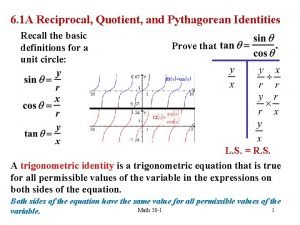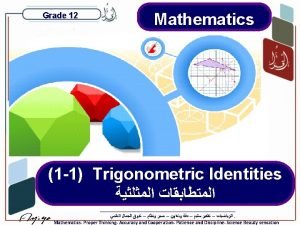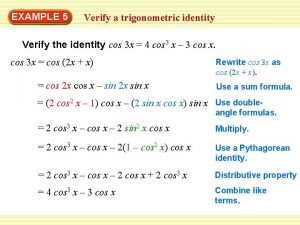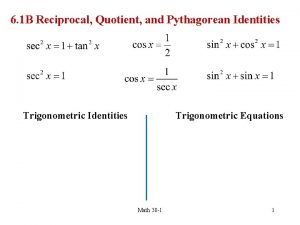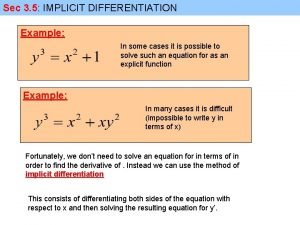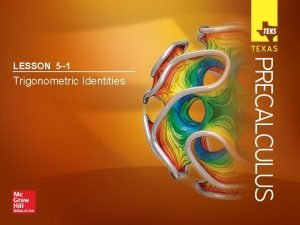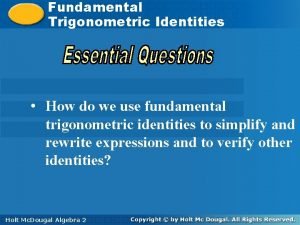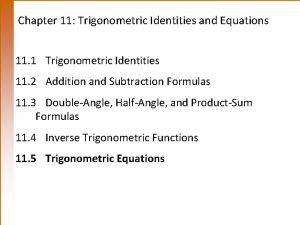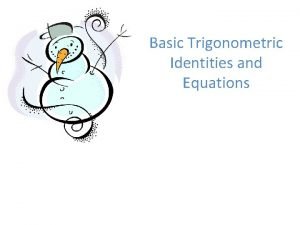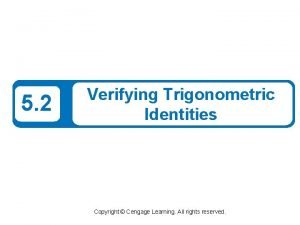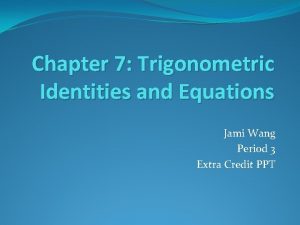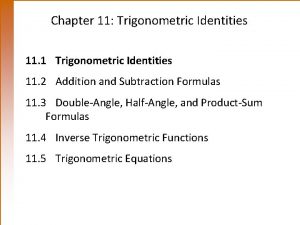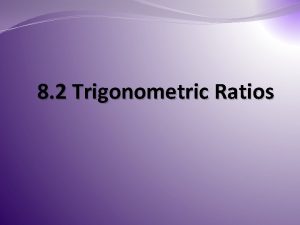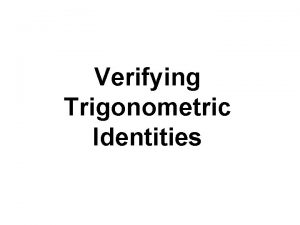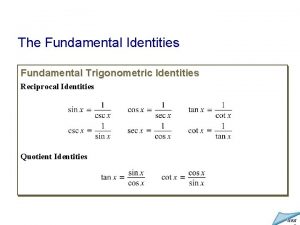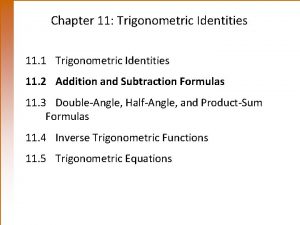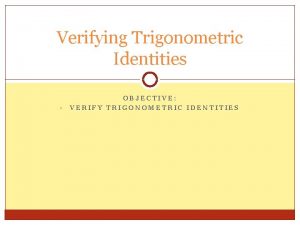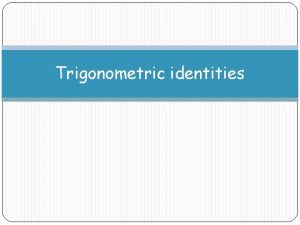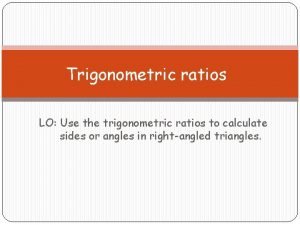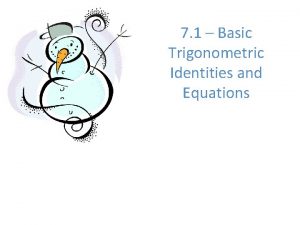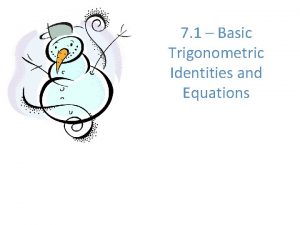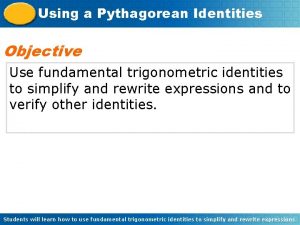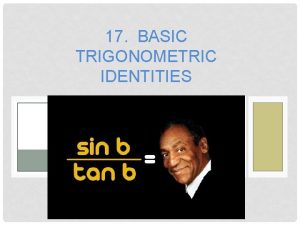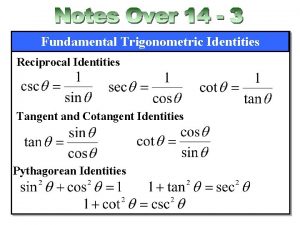Basic Trigonometric Identities Pythagorean Identity Trigonometric Ratios Consider

Basic Trigonometric Identities Pythagorean Identity


Trigonometric Ratios • Consider a right angle triangle with as one of its acute angles. The trigonometric ratios are defined as follows (see Figure 1). Figure 1

Unit Circle

A circle with center at (0, 0) and radius 1 is called a unit circle. The equation of this circle would be (0, 1) (-1, 0) (0, -1) So points on this circle must satisfy this equation.

Trigonometric Identities Quotient Identities Reciprocal Identities Pythagorean Identities sin 2 + cos 2 = 1 tan 2 + 1 = sec 2 cot 2 + 1 = csc 2 sin 2 = 1 - cos 2 tan 2 = sec 2 - 1 cot 2 = csc 2 - 1 cos 2 = 1 - sin 2

Where did our pythagorean identities come from? ? …. and the Unit Circle? • What is the equation for the unit circle? x 2 + y 2 = 1 • What does x = ? What does y = ? (in terms of trig functions) sin 2θ + cos 2θ = 1 Pythagorean Identity!

Take the Pythagorean Identity and discover a new one! Hint: Try dividing everything by cos 2θ sin 2θ + cos 2θ = 1. cos 2θ tan 2θ + 1 = sec 2θ Quotient Identity another Pythagorean Identity Reciprocal Identity

Take the Pythagorean Identity and discover a new one! Hint: Try dividing everything by sin 2θ + cos 2θ = 1. sin 2θ 1 + cot 2θ = csc 2θ Quotient Identity a third Pythagorean Identity Reciprocal Identity

Simplifying trig Identity Example: Simplify tanx cosx sin x tanx cos x tanxcosx = sin x

Simplifying trig Identity Example: simplify sec x csc x 1 cos sec x csc 1 x sin x = 1 sinx x cos x 1 = sin x cos x = tan x

Using the identities you now know, find the trig value. If cosθ = 3/4, find secθ If cosθ = 3/5, find cscθ.

Simplifying Trigonometric Expressions Identities can be used to simplify trigonometric expressions. Simplify. a) b)

Simplifing Trigonometric Expressions c) (1 + tan x)2 - 2 sin x sec x d)

Simplify each expression

Example Simplify: = cot x (csc 2 x - 1) = cot x (cot 2 x) = cot 3 x Factor out cot x

Example Simplify: = sin x (sin x) + cos x 2 = sin x + (cos x)cos x = sin 2 x + cos 2 x cos x = 1 cos x = sec x Use quotient identity Simplify fraction with LCD Simplify numerator Use pythagorean iden Use reciprocal identity

Examples • Prove tan(x) cos(x) = sin(x) 21

Examples • Prove tan 2(x) = sin 2(x) cos-2(x) 22

Examples • Prove 23

Examples • Prove 24
- Slides: 21
